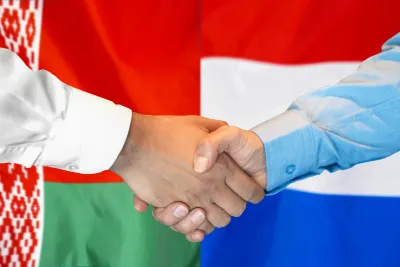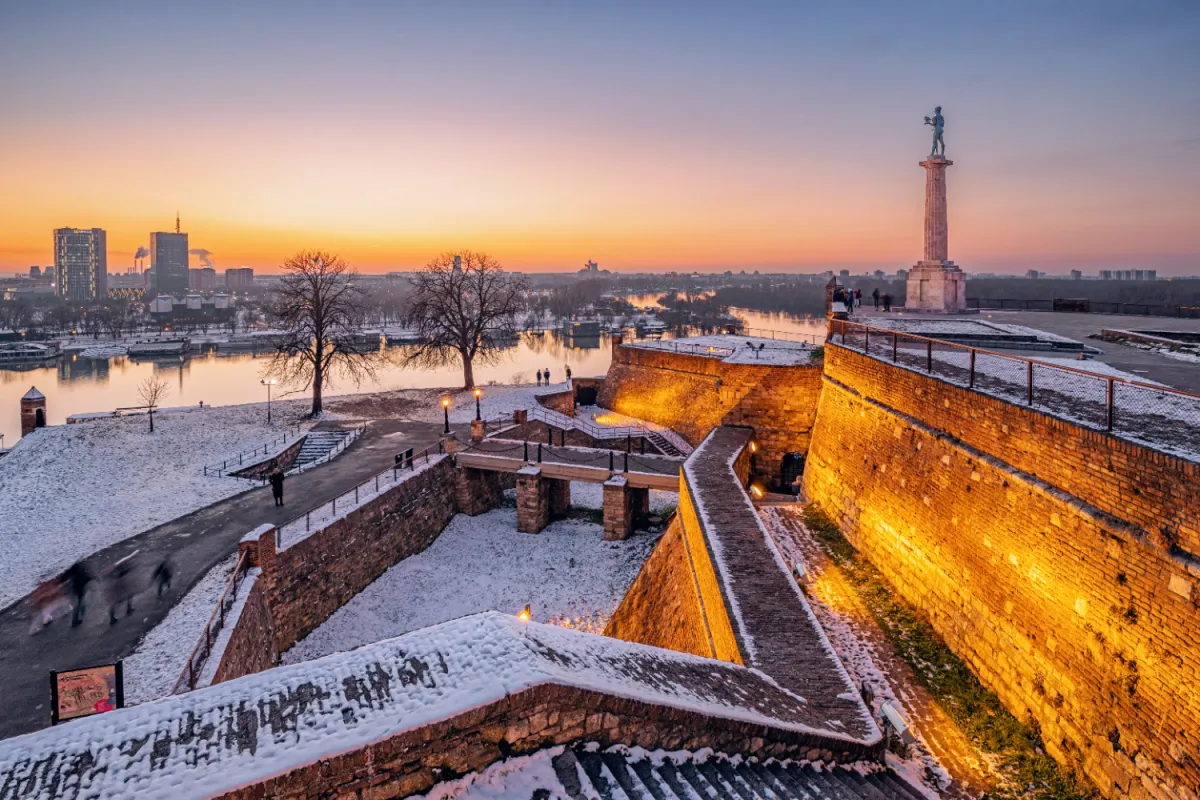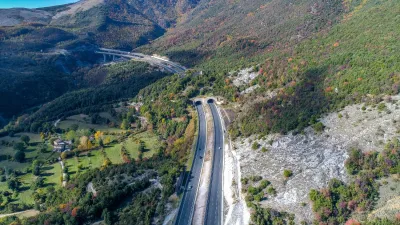
Expanding on the topic of "Enhancing Connectivity and Cooperation: Road Border Crossings Between Bulgaria and Serbia," there are several important aspects to consider, from infrastructure improvements to the impact of these crossings on regional development and international cooperation:
Major Border Crossings and Infrastructure Details:
-
Kalotina-Gradina Border Crossing:
- Location: It is situated along the E80 highway, which is a critical route for transportation between Western Europe and the Middle East.
- Significance: As the most trafficked crossing between Bulgaria and Serbia, it plays a pivotal role in the Trans-European Transport Network (TEN-T), facilitating significant cargo flow.
- Recent Developments: The border checkpoint has been undergoing modernization, with expansions to include more lanes for trucks and passenger vehicles, aiming to reduce waiting times. The integration of digital customs systems has also enhanced efficiency.
-
Vrashka Chuka Border Crossing:
- Location: It connects Belogradchik in Bulgaria to Zaječar in Serbia, offering a scenic route through the Balkan Mountains.
- Use: While not as busy as Kalotina-Gradina, this crossing is important for regional trade, local tourism, and small-scale cross-border economic activities.
- Potential for Growth: Investment in road infrastructure and tourism facilities in this region could increase its significance, especially for rural development.
-
Bregovo-Negotin Border Crossing:
- Location: Situated in the northwest, linking Vidin Province in Bulgaria with Negotin in Serbia.
- Strategic Role: It serves as a vital connection for residents of both regions and facilitates access to the Danube River, which is crucial for trade and transport.
- Focus Area: Environmental management is a key aspect here, as the area is close to the Danube's natural habitats. Improving this crossing while maintaining ecological balance is a regional priority.

- Trade Volumes: Bulgaria and Serbia have seen a steady increase in bilateral trade, particularly in agricultural products, raw materials, machinery, and consumer goods. Efficient border crossings are crucial for reducing the logistics costs associated with these exchanges.
- Industrial Hubs: Key cities like Sofia and Niš benefit from their proximity to border crossings, as they attract logistics companies and distribution centers. The improved infrastructure facilitates faster delivery times and encourages investment in industrial zones.
- Customs Union and Harmonization: Bulgaria, as an EU member, follows the customs protocols of the European Union, while Serbia is aligning with these standards as part of its EU accession process. Harmonizing these customs procedures at border crossings helps in minimizing delays and fostering smoother trade flows.

- Cross-Border Tourism Growth: The improved road infrastructure has made it easier for tourists to explore attractions on both sides of the border. For instance, tourists can travel seamlessly from Sofia to visit Serbia's historic city of Niš or explore Bulgaria's Belogradchik Rocks.
- Cultural Events and Festivals: Both Bulgaria and Serbia have rich cultural heritages, and better connectivity encourages participation in cultural festivals, music events, and traditional fairs. This has a positive impact on the hospitality and service sectors in border regions.
- Development of Joint Tourism Routes: There are ongoing discussions about creating joint tourism routes that highlight the natural beauty and cultural landmarks of both countries, such as the Danube River, mountain trails, and UNESCO heritage sites.
- Funding from the EU: The European Union has invested in projects like the Cross-Border Cooperation Program (CBC) between Bulgaria and Serbia, aimed at improving infrastructure and fostering economic development in border regions.
- TEN-T Network Integration: The EU’s TEN-T network, which aims to establish efficient transport corridors across Europe, includes routes through the Balkans. This has resulted in funding for road repairs, bridge reconstruction, and modernized customs facilities.
- Digitalization of Border Controls: Recent initiatives focus on digitalizing border procedures to facilitate smoother crossings. This includes electronic toll collection, automated customs checks, and real-time traffic management systems.
- Traffic Congestion and Border Delays: During peak seasons, such as summer holidays, the Kalotina-Gradina crossing can experience significant congestion, causing delays for tourists and commercial vehicles. Expanding lanes and improving processing speeds are ongoing objectives.
- Bilateral Cooperation for Crisis Management: Natural disasters, such as floods or forest fires, can affect the border regions. Bulgaria and Serbia have established cooperation protocols to ensure rapid response and recovery, with road connectivity playing a crucial role in emergency situations.
- Environmental Concerns: With the development of road infrastructure comes the need to protect the natural environment, especially near sensitive areas like the Balkan Mountains and the Danube River basin. Cross-border projects include measures to reduce environmental impact, such as constructing wildlife passages and monitoring pollution levels.
- Serbia’s EU Accession Aspirations: As Serbia continues its path toward EU membership, further alignment with European transportation and customs standards will be essential. This transition is expected to simplify border procedures with Bulgaria, enhancing connectivity.
- Focus on Green Transportation: Both countries are increasingly focused on developing green transport corridors, with efforts to reduce the carbon footprint of cross-border trade. This includes promoting electric vehicle use and developing rest areas with charging stations.
- New Infrastructure Projects: Proposed projects include the construction of additional border lanes at key crossings and the rehabilitation of secondary roads that connect rural areas to the main border points. These projects aim to provide more options for travelers and reduce pressure on the primary crossings.
In summary, the border crossings between Bulgaria and Serbia are not just about physical connections; they are key to fostering deeper economic, cultural, and political ties. Their enhancement aligns with broader European goals of stability, economic growth, and regional integration, ensuring that the border becomes a space of opportunity rather than division.
The Bulgaria-Serbia border, spanning 318 kilometers, serves as a crucial junction in southeastern Europe. The various border posts along this frontier play a vital role in facilitating inter-country cooperation, tourism, and trade. They ensure the smooth and equitable transit of goods and people, fostering cross-border development and strengthening relations between the two nations.
A Historical Overview of the Serbia-Bulgaria Border
The connection between Serbia and Bulgaria spans centuries, evolving alongside shifts in the region's political landscape. This area has witnessed both periods of conflict and cooperation, shaping today's border control measures. The dissolution of Yugoslavia in the 1990s led to the establishment of the current, internationally recognized border between Bulgaria and Serbia. As with many borders, bilateral regulations were put in place to manage the legal movement of goods and people. It’s essential to remember that travelers will need a Bulgarian Vignette when crossing from Serbia into Bulgaria. Additionally, agreements were established to ensure mutual security.
The Significance of Border Crossings
For both Bulgaria and Serbia, the border crossing points are of national importance. They serve as vital conduits for the flow of goods, services, and investments, playing a key role in economic collaboration. These crossings are equally crucial for the tourism industries of both countries, fostering cross-border goodwill and providing visitors with access to the rich cultural, historical, and natural treasures of the region. On a local level, the crossings promote cooperation and strengthen social and political understanding between communities on both sides.

Let’s explore the key border crossings between Bulgaria and Serbia, focusing on those that support road transportation. We’ll delve into how each crossing can be accessed and highlight some nearby attractions.
Border Crossing Strezimirovtsi
Located in western Bulgaria, this crossing is accessible via the E69 from Sofia, Bulgaria. On the Serbian side, travelers can take Route 40 from Surdulica, passing through the picturesque landscapes near Vlasinko Jazero Lake in eastern Serbia. The area is rich in historical sites on both sides of the border, making this route popular among tourists. The stunning natural surroundings attract visitors, while the crossing itself plays a vital role in facilitating trade between the two countries.
Kalotina - Gradina
Situated in western Bulgaria, this is the main route connecting Sofia to the Serbian border. Travelers reach the crossing along the E80, a major European route. It serves as a key corridor for transporting goods and people across the continent. Sofia, a city blending history and modernity, offers abundant attractions for tourists. Across the border, the charming village of Gradina is the first Serbian settlement visitors encounter. This crossing supports both tourism and commerce, contributing significantly to regional development and cross-border unity.
Bregovo - Vrashka Chuka
In northwestern Bulgaria, you’ll find perhaps the most scenic route between Bulgaria and Serbia. The border crossing is accessible via the I-21 through Bregovo, located along the eastern bank of the Timok River. From here, the I-2 connects to Vidin at the Danube River, offering a ferry crossing to Romania. The route, set against the stunning backdrop of the Balkan Mountains, is a favorite among nature enthusiasts. On the Serbian side, the nearby town of Novoseltsi is known for its natural beauty, featuring the Vrashka Chuka mountain and nature park. To reach this border, take Route 14 southwest towards Novoseltsi.
Botevgrad - Dragoman
Connecting Botevgrad, Bulgaria, with Dragoman, Serbia, this crossing is reached via the I-1 road, an important route for cross-border traffic. The region surrounding Botevgrad is steeped in historical landmarks, while the landscapes around Dragoman in Serbia offer a range of outdoor activities. This crossing is crucial for both trade and tourism, fostering connections between the two countries.
Gyueshevo - Dimitrovgrad
This crossing links the towns of Gyueshevo in Bulgaria and Dimitrovgrad in Serbia, passing through scenic landscapes and areas rich in cultural and historical attractions. The I-8 road provides access, connecting further to the A1, which extends to Kapitan Andreevo, a key crossing with Turkey. This route supports regional trade and tourism, contributing to the economic vitality of the area.
Cross-Border Cooperation and Regional Initiatives
Joint Projects and Initiatives
Bulgaria and Serbia have established strong cross-border ties through numerous collaborative projects and initiatives. These efforts have enhanced connectivity and spurred development throughout the region. One standout success is the Sofia-Nis highway, linking the capitals of both countries. Additionally, the two nations collaborate in sectors such as agriculture, energy, and tourism, fostering mutual economic growth.
EU Support for Border Infrastructure
The European Union has significantly contributed to the development of border infrastructure between Bulgaria and Serbia. This support has led to the modernization of crossing facilities, boosting their capacity and improving transit times. Such investments have strengthened border controls and facilitated smoother traffic flow for both travelers and goods, benefiting the local economy and beyond.
Economic and Cultural Collaboration
The border region enjoys dynamic economic and cultural cooperation. Bilateral trade and investment continue to drive growth and create jobs. Business forums, joint ventures, and trade fairs enable collaboration and the exchange of ideas. Cultural initiatives foster dialogue and celebrate the shared heritage and traditions of Bulgaria and Serbia, deepening mutual understanding.
Border control remains a top priority for both Bulgaria and Serbia. The two nations work closely to safeguard border integrity while fostering legitimate trade and travel. Key challenges include tackling illegal immigration and organized crime. To address these issues, they actively share intelligence and collaborate on enhancing border control systems.
Infrastructure Improvements and Modernization Plans
Both sides of the border are actively pursuing plans to expand, upgrade, and modernize regional infrastructure. These initiatives include enhancing existing roads, establishing new border posts, and adopting cutting-edge technologies. Such improvements aim to make border crossings smoother for tourists and traders alike, fostering better connectivity and regional growth.
Prospects for Digitalization and Streamlined Customs Procedures
Like much of Europe, Bulgaria and Serbia are embracing advanced technologies to improve customs procedures. The adoption of electronic customs systems and online declarations is speeding up the movement of goods and simplifying trade formalities. Continuous joint efforts are focused on further optimizing and expediting these processes, ensuring a seamless border experience.
Sustainable Tourism and Regional Integration Efforts
The region's rich natural, historical, and cultural attractions draw many visitors. To harness this potential sustainably, several joint initiatives promote the area while emphasizing responsible tourism practices. Community involvement and environmental preservation are central to these efforts, aiming to create a balance between tourism growth and long-term sustainability.
Overall, cross-border cooperation and regional projects are strengthening ties and enhancing development. With support from the EU, ongoing modernization of border facilities aligns with both European and national objectives. These advancements promise to boost the region's appeal to tourists and investors alike. Through proactive and collaborative management, this vital crossing is poised to play an increasingly significant role, benefiting both local communities and the broader region.
